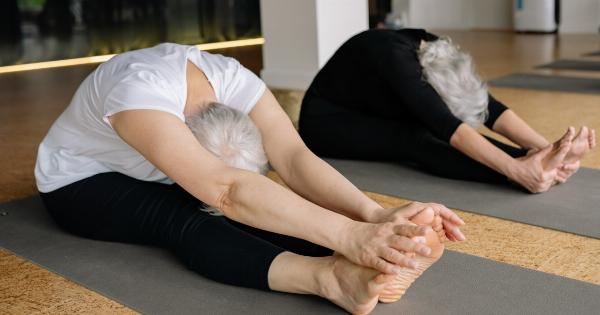Bladder prolapse and ovarian cysts are two separate conditions that can occur in women. While they may not seem related, they can have similar symptoms and can even occur at the same time.
Here’s what you need to know about bladder prolapse and ovarian cysts.
What is Bladder Prolapse?
Bladder prolapse, also known as cystocele, occurs when the bladder drops or bulges into the vagina. This can happen when the muscles and tissues supporting the bladder weaken, usually as a result of childbirth, menopause, or heavy lifting.
Symptoms of bladder prolapse include:.
- A feeling that something is falling out of the vagina
- Pain or discomfort during intercourse
- Frequent urinary tract infections
- Difficulty emptying the bladder completely
What are Ovarian Cysts?
Ovarian cysts are fluid-filled sacs that develop on the ovaries. They are usually harmless and go away on their own, but in some cases they can cause pain and may need to be surgically removed.
Symptoms of ovarian cysts include:.
- Pain in the lower abdomen or pelvis
- Pressure or bloating in the abdomen
- Increased urination
- Irregular periods
Can Bladder Prolapse and Ovarian Cysts Occur Together?
It is possible for bladder prolapse and ovarian cysts to occur at the same time, but they are not necessarily related. Both conditions can cause pelvic pain and discomfort, which can make it difficult to determine the root cause of the symptoms.
If you are experiencing symptoms of both bladder prolapse and ovarian cysts, it is important to see a doctor to determine the best course of treatment.
How are Bladder Prolapse and Ovarian Cysts Diagnosed?
Both bladder prolapse and ovarian cysts can be diagnosed through a physical examination and imaging tests.
For bladder prolapse, a doctor may perform a pelvic exam to check for any signs of prolapse. They may also perform a bladder function test or a cystoscopy, which uses a small camera to look inside the bladder.
For ovarian cysts, a doctor may perform a pelvic exam, an ultrasound, or an MRI to check for the presence and size of any cysts. In some cases, a blood test may also be performed to check for certain markers that could indicate the presence of cancer.
What are the Treatments for Bladder Prolapse and Ovarian Cysts?
Treatment for bladder prolapse and ovarian cysts will depend on the severity of the condition and the individual’s symptoms.
For bladder prolapse, non-surgical options include pelvic floor exercises, estrogen therapy, and pessaries, which are devices inserted into the vagina to support the bladder. In more severe cases, surgery may be necessary to repair the prolapse.
For ovarian cysts, treatment may not be necessary if the cyst is small and not causing any symptoms. In some cases, hormonal birth control may be prescribed to prevent the formation of new cysts.
Surgery may be necessary if the cyst is large or causing significant pain or discomfort.
Preventing Bladder Prolapse and Ovarian Cysts
While bladder prolapse and ovarian cysts may not be preventable in all cases, there are steps women can take to reduce their risk.
For bladder prolapse:.
- Do kegel exercises to strengthen the pelvic muscles
- Avoid heavy lifting
- Quit smoking
- Maintain a healthy weight
For ovarian cysts:.
- Take hormonal birth control
- Avoid smoking
- Maintain a healthy weight
- Get regular pelvic exams
Conclusion
Bladder prolapse and ovarian cysts are two separate conditions that can occur in women. While they may not always be related, they can cause similar symptoms and can even occur at the same time.
If you are experiencing symptoms of either condition, it is important to see a doctor to determine the best course of treatment.




























